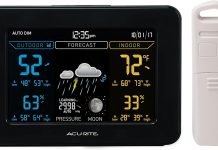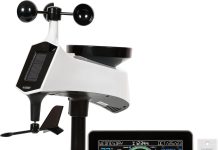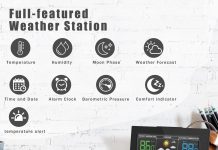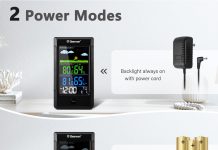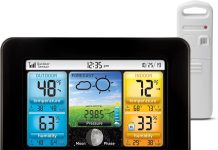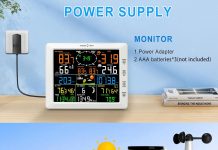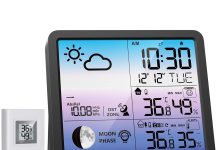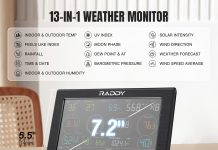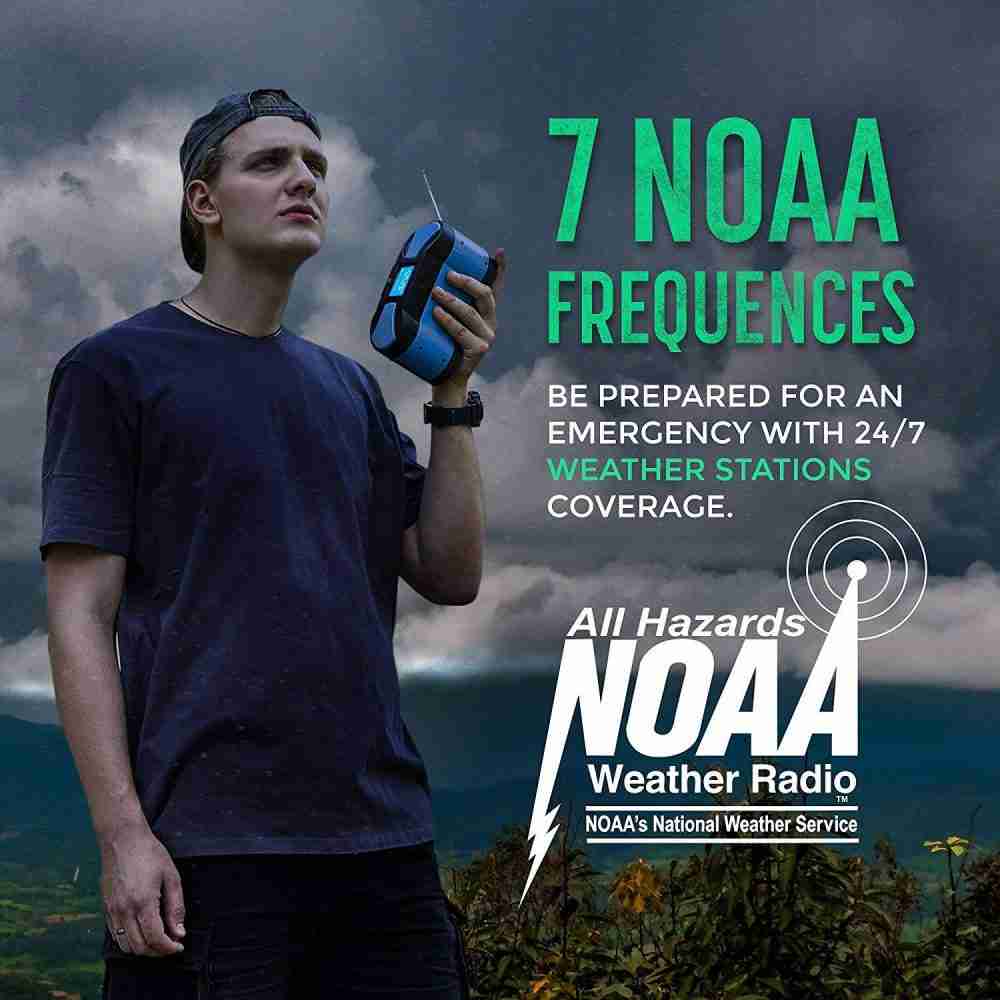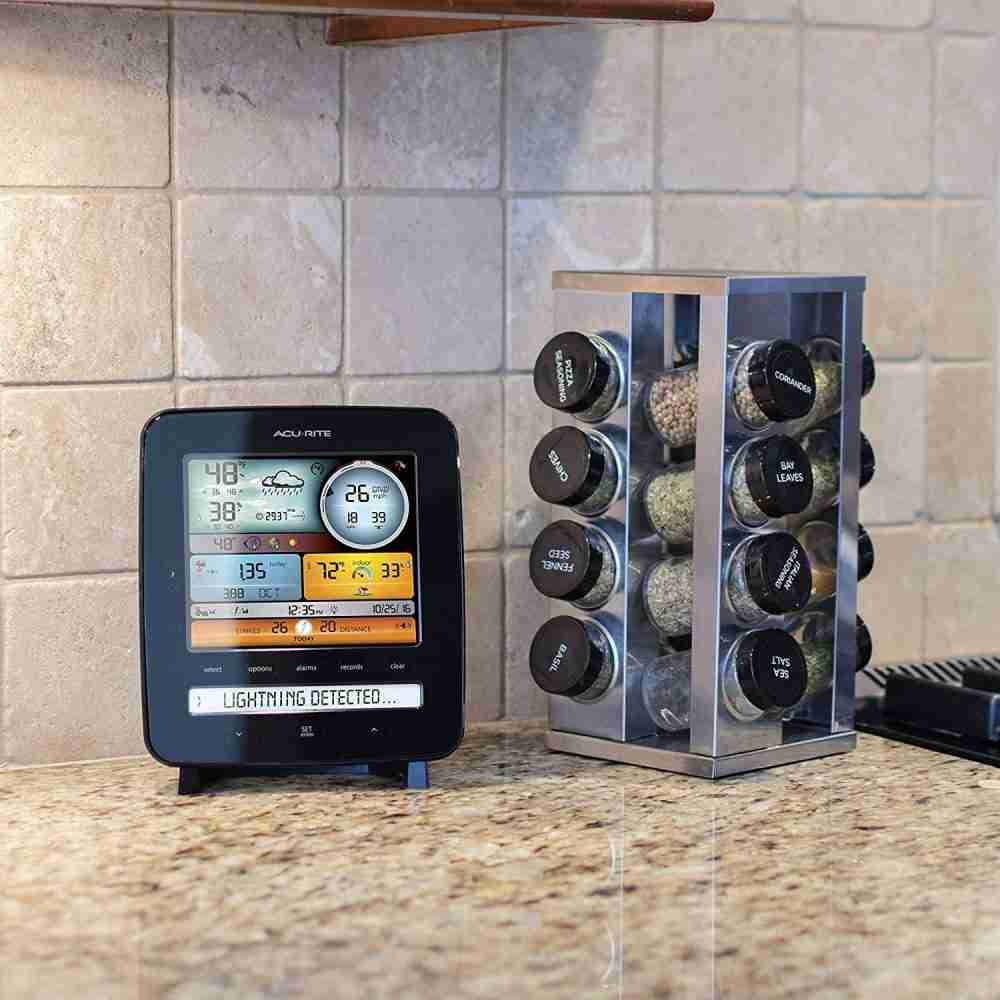Curious about the frequency at which your home weather station updates its data? Wonder no more! In this article, we shed light on the frequency with which a home weather station updates its data, keeping you informed about the latest conditions. Whether you’re an amateur weather enthusiast or rely heavily on accurate weather forecasts, understanding the update intervals of your home weather station is key. So sit back, relax, and let’s explore the fascinating world of weather station data updates.
Factors Affecting Data Update Frequency
When it comes to the data update frequency of a home weather station, several factors come into play. These factors can affect the transmission of data, the readings from the sensors, and the overall system configuration. Understanding these factors is crucial in determining the accuracy and timeliness of weather data. In this article, we will explore the various factors that can impact data update frequency, their importance, and potential challenges and limitations that may arise. We will also discuss ways to improve data update frequency for optimal usage.
Wireless Transmission Methods
One of the primary factors influencing data update frequency is the transmission method used by the weather station. There are various wireless transmission methods that are commonly employed, including Wi-Fi, Bluetooth, and RF (radio frequency). Each of these methods has its advantages and limitations when it comes to data transmission.
Wi-Fi offers a high-speed and reliable connection, allowing for real-time updates of weather data. It enables seamless integration with internet-connected devices, providing easy access to weather information from anywhere. Bluetooth, on the other hand, has a shorter range but can still provide regular updates when within range of the receiving device. RF offers a wide transmission range, but the data updates may be less frequent.
Wired Transmission Methods
In addition to wireless transmission methods, some weather stations utilize wired transmission methods. These methods include USB and Ethernet. USB transmission offers a direct and stable connection between the weather station and the receiving device. It allows for consistent and timely data updates. Ethernet, on the other hand, provides a reliable and high-speed connection over a wired network. It ensures a constant flow of weather data with minimal interruptions.
Sensor Readings Interval
Another factor that affects data update frequency is the interval at which the weather station’s sensors take readings. These sensors, which measure various weather parameters, play a crucial role in providing accurate and up-to-date weather data. The interval at which these readings are taken can vary depending on the parameter being measured.
For example, temperature readings are often taken at regular intervals of a few minutes. Humidity, wind speed, wind direction, rainfall, and barometric pressure readings may also be updated every few minutes to provide the most accurate and real-time data. Parameters such as UV index and solar radiation may have longer intervals between updates, as these measurements are less likely to fluctuate rapidly.
System Configuration Impact
The overall system configuration of a home weather station can significantly impact the data update frequency. Factors such as data storage capacity, power source, and internet connectivity all play a role in determining the frequency of updates.
Having a sufficient data storage capacity ensures that weather data can be stored and transmitted without interruptions. A larger storage capacity allows for a more extensive record of weather data and more frequent updates. The power source of the weather station also affects data update frequency. A reliable and consistent power source ensures that the sensors and transmission methods are always operational, enabling regular updates. Lastly, stable internet connectivity is vital for transmitting weather data in real-time. Uninterrupted internet access ensures that the weather station can provide timely updates to users.
Weather Data Acquisition Frequency
The frequency at which weather data is acquired and updated can be classified into two categories: real-time updates and scheduled updates. Real-time updates provide users with immediate and up-to-date weather information as it is collected by the weather station. This allows for the most accurate and timely weather forecasting and monitoring.
On the other hand, scheduled updates provide regular updates at predetermined time intervals. These updates may be less frequent compared to real-time updates but still provide valuable information for users. Scheduled updates are often used by users who do not require constant real-time monitoring but still want timely weather updates.
User Control and Customization
To cater to different user preferences and needs, home weather stations often include options for user control and customization. This includes update frequency settings and data reporting options.
Users can adjust the update frequency settings of their weather station to suit their requirements. They can choose between more frequent updates for real-time monitoring or less frequent updates for general weather tracking. Additionally, users can customize the data reporting options, selecting which weather parameters they want to receive updates on. This allows users to focus on the specific weather data that is most relevant to their needs.
Importance and Applications of Frequent Updates
Frequent updates of weather data play a crucial role in various applications and industries. Accurate weather forecasting is heavily reliant on up-to-date data, as even small changes in weather conditions can significantly impact predictions. Real-time and frequent updates enable meteorologists and weather enthusiasts to make accurate forecasts and inform the public about potential hazards.
Environmental monitoring is another critical application of frequent weather data updates. By continuously collecting and analyzing data on parameters such as temperature, humidity, and air quality, scientists can monitor environmental conditions and track changes over time. This information is vital for understanding the impact of environmental factors on ecosystems and long-term climate trends.
In the agricultural sector, frequent updates of weather data are crucial for making informed decisions. Farmers rely on weather information to determine the optimal timing for planting, irrigation, and harvesting. By having access to frequent updates, farmers can better manage their crops and mitigate potential risks such as frost, drought, or excessive rainfall.
Potential Challenges and Limitations
While frequent updates are desirable, there are some challenges and limitations that need to be considered. One such challenge is the consumption of battery power. Transmitting data frequently can drain the batteries of the weather station quickly. It is important to ensure that the weather station has sufficient power supply or a reliable battery backup system to avoid any interruptions in data transmission.
Another limitation is the data transmission range. Wireless transmission methods such as Wi-Fi, Bluetooth, and RF have certain limitations on their transmission range. Users should ensure that the weather station is within range of the receiving device or network to ensure proper and timely data updates.
Finally, data interference can also impact the data update frequency. Interference from other electronic devices or environmental factors such as severe weather conditions can disrupt the transmission of weather data. It is important to identify and mitigate any sources of interference to maintain consistent and uninterrupted data updates.
Improving Data Update Frequency
To improve data update frequency, several steps can be taken. Upgrading sensors to more advanced models can enable faster and more accurate readings, allowing for more frequent updates. Optimizing transmission methods, such as improving Wi-Fi or Bluetooth connections, can also enhance the data update frequency. Additionally, regular system maintenance and updates ensure that the weather station operates efficiently and can provide timely updates.
In summary, the data update frequency of a home weather station is influenced by various factors. These factors include the transmission method, sensor readings interval, and overall system configuration. Frequent updates are important for accurate weather forecasting, environmental monitoring, and agricultural decision making. However, challenges and limitations such as battery consumption, data transmission range, and data interference need to be considered. By understanding these factors and implementing strategies to improve data update frequency, users can ensure they have access to timely and reliable weather information.


